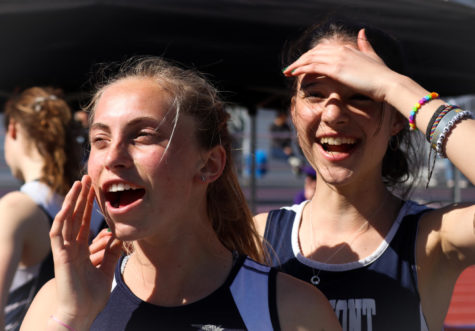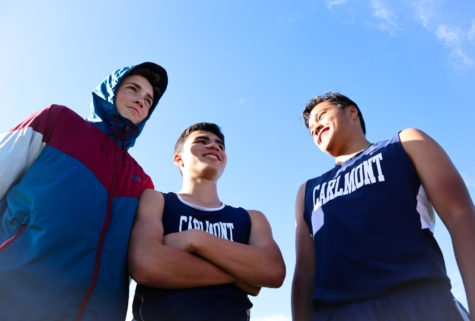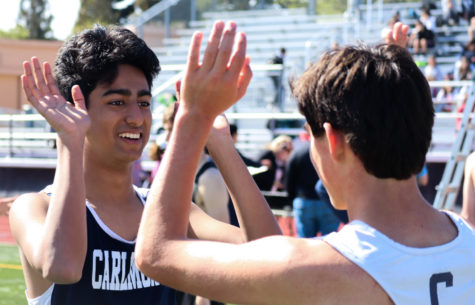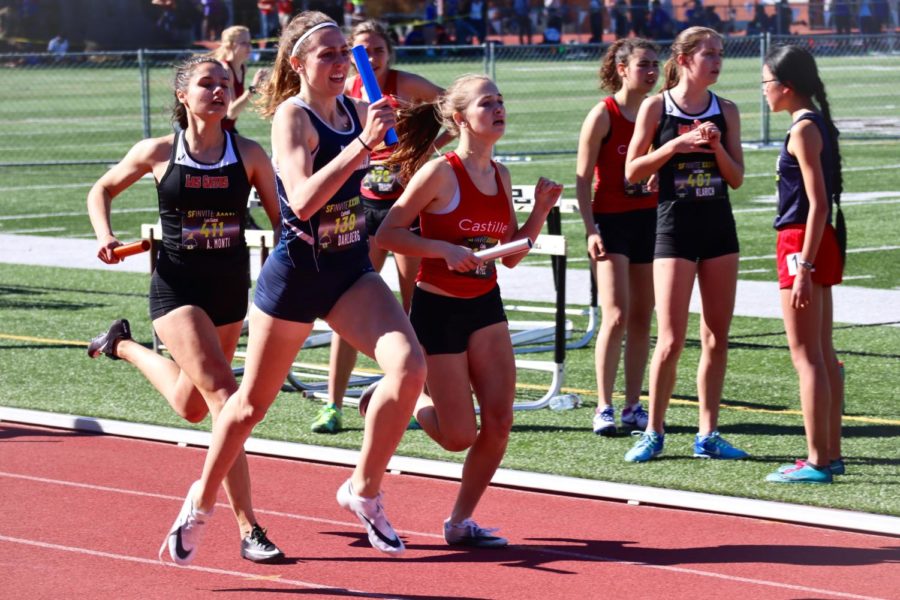Picture this: a track runner is in last place and pushing to finish the race, but everyone can tell that they are starting to give up. It is pouring rain with strong winds on the backstretch.
Everyone else on the team is minding their own business and not watching the race, even though they are right on the field with the runner. There is no one on the track team cheering the runner on, and they end up finishing last with a bad time.
As the sprints manager for Carlmont’s track team, one of my responsibilities is to prevent this scenario from happening, but I don’t have to do much about it.
Now, let’s paint Carlmont’s picture: a runner is in last place, losing motivation to beat the people in front of them. They come around the corner, and they hear yelling. Although the weather conditions are horrible and make it miserable to be outside, their teammates are running on the sidelines jumping up and down and cheering the runner on.
Instead of finishing dead last, the runner ties with the runner in front of them. That small amount of spirit from the team encouraged the runner to try harder to succeed.

Teammates Maya Blodgett, a freshman, and Ella Williams, a sophomore, cheer the team on during the 3200-meter, the longest race at the Sequoia meet.
According to varsity.com, a cheerleading website, “Once you start to encourage and support your teammates, your teammates will start to encourage and support you! The best teams are made up of athletes who work together and who are willing to make sacrifices. You don’t have to be the most talented member of the team to leave the biggest impact. Being a great teammate is a mindset, not a skill.”
Teammates have a huge impact when it comes to motivation. It can either make or break a team.
Since there are so many events in track and field — sprints, distance running, jumps, throws and hurdles — there are plenty of opportunities to cheer each other on during track meets.
Sometimes our team gets so excited for their teammates to run that they run with them on the sidelines, yelling at them to keep up their speed and not give up. This consistent show of encouragement, acceptance, and support is a big reason why students participate in Carlmont track. You may not be the most talented runner, jumper, or thrower, but your track teammates help motivate you to be your best regardless.
Even though most races are individual events, some require teamwork.

Freshmen Jack Villagrand, Ethan Moussa, and Joshua Yglesias talk about how they are going to win their upcoming relay race against the Sequoia team.
The 4×100-meter and 4×400-meter relays require a baton handoff between a team of four runners. The runners need to be able to hand a baton to each other while still running and not lose precious seconds.
According to an article about the Olympic sprint relays from Vogue, “Just as with swimming, track relays require particular types of athletes with unique skills. But unlike pool-based races, runners pass a baton — the stick — in a designated zone on the track, so they have to be familiar with making and receiving handoffs. Sudden instances of butterfingers and dropped batons can cost time or even the race.”
Points are crucial when it comes to any meet against other schools.
Every single point counts. Having more people in track and field events increases your chance to snag a few more points from the other teams.
On Wednesday, March 20, Carlmont had a strong showing against rival Sequoia High School.
According to athletic.net, a site that records the scores for high school track meets, Carlmont beat Sequoia in varsity girls (83-52), frosh-soph girls (67-17), and frosh-soph boys (81-20). The varsity boys were neck and neck but ultimately lost because Carlmont didn’t compete in the pole vault event.

Freshmen Ari Ravi and Jack Peacock congratulate each other after their 100-meter race at Sequoia.
Overall, the Sequoia meet results were outstanding for several reasons. Athletes performed their best in their main events and they were willing to compete in secondary events to get the team points. The team camaraderie and constant cheering for every teammate helped all athletes push it to the limit to do their best. It paid off in the results.
Track is like a family to me. We accept, support, and encourage each other to be our best. When it all comes down to it, this makes us a great team, and the support is the positive difference in our team’s performance.


